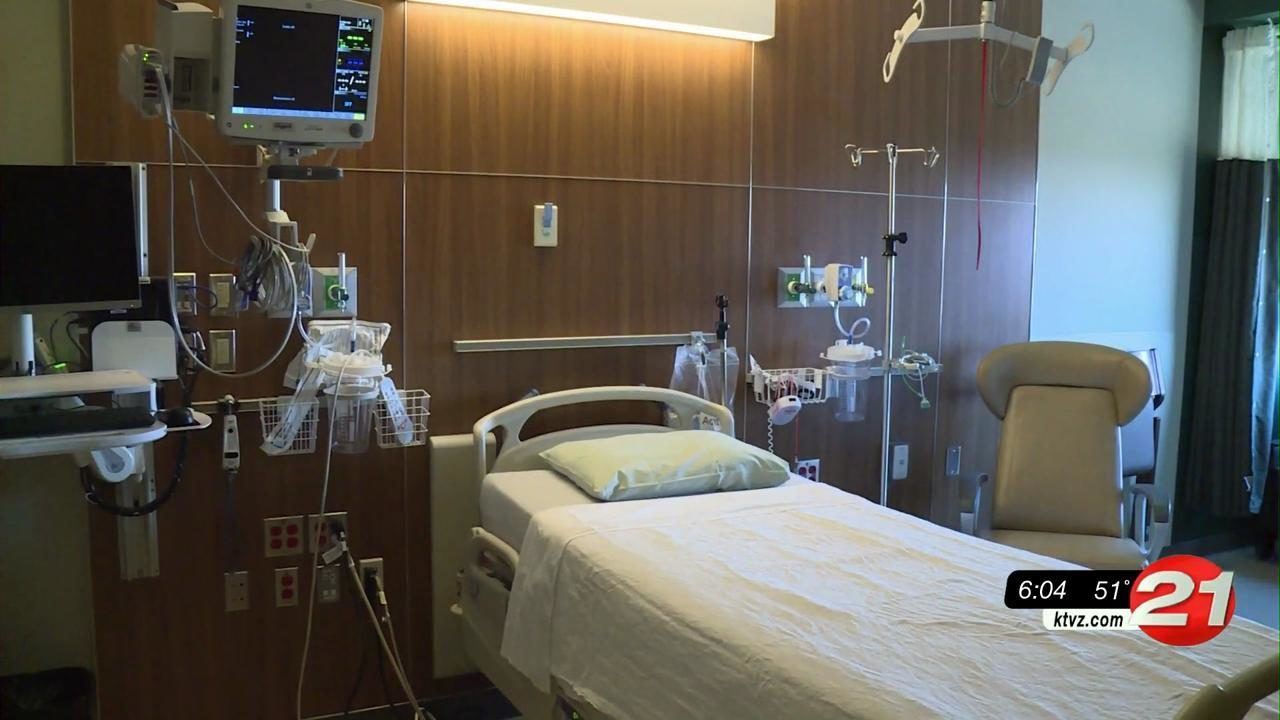‘The math no longer works’: Oregon hospitals report worst financial quarter since pandemic hit

LAKE OSWEGO, Ore. (KTVZ) -- The bleak hospital financial picture from 2021 worsened in the first quarter of 2022, as a surge in COVID-19 hospitalizations from the Omicron wave and rising labor and other costs combined to produce a dismal fiscal quarter that saw 58 percent of Oregon’s hospitals post a negative margin.
Hospitals lost a collective $103 million in Q1 2022 (hospitals posted an average gain of $190 million per quarter in 2019), the Oregon Association of Hospitals and Health Systems reported Thursday.
Here's the rest of their news release:
Median Operating Margin saw a sharp decline in Q1 to -2.5 percent, dropping below the staggering lows seen in the earliest stages of the pandemic. The full report is attached. While over half of Oregon hospitals posted a negative margin last quarter, some of the negative margins were in the double digits.
“These sobering numbers come after two years of really bad financial performance,” said Becky Hultberg, OAHHS President and CEO. “We are concerned about some of these community organizations’ ability to provide life-saving and preventative services in their communities if the financial picture does not improve.”
Simply put, hospital revenue is not covering the cost of patient care. Net Patient Revenue (NPR) again fell short of Total Operating Expenses (TOE) in Q1 2022, and the gap is growing wider. Over the past four quarters, NPR has been flat while expenses have risen 10.2 percent.
One significant driver of this is higher costs for labor (up nearly 20 percent over the last four quarters and up 26% since 2019) as hospitals raise wages to compete for scarce workers and have had to hire contract labor to ensure ongoing patient care. Labor accounts for at least half of a hospital’s cost, so even a small increase in labor cost has a big impact.
Other hospital costs have risen as well: other expenses such as supplies, housekeeping, IT, utilities, and insurance have risen 18 percent since 2019.
In combination with expenses, hospitals continued to deal with historic patient care volumes. Omicron-fueled COVID-19 patient loads peaked at 1,134 (just short of the Delta wave peak). During the pandemic, hospitals have often been unable to discharge patients to a more appropriate level of care at a long-term care or behavioral health setting, meaning on any given day, hundreds of patients are either “boarding” in the emergency department or in a hospital bed, waiting for a placement in the community.
“Let’s be clear, the current state of hospital finances can’t continue. The math no longer works,” said Hultberg.
###
About OAHHS: Founded in 1934, OAHHS is a statewide, nonprofit trade association that works closely with local and national government leaders, business and citizen coalitions, and other professional health care organizations to enhance and promote community health and to continue improving Oregon’s innovative health care delivery system.
Apprise Health Insights is the most reliable and complete source of hospital data in Oregon. As the data subsidiary of the Oregon Association of Hospitals and Health Systems (OAHHS), Apprise staff have gathered and analyzed data about Oregon hospitals and health systems since 1985. We strive to provide data, tools, and expertise to help hospitals understand the healthcare landscape in the Pacific Northwest.
Attached Media Files:Q1 2022 Financial Report